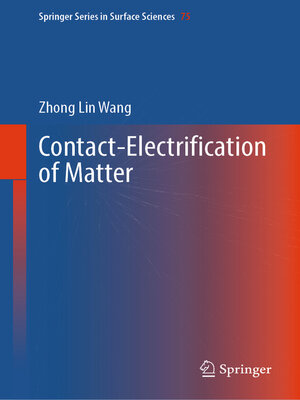
Sign up to save your library
With an OverDrive account, you can save your favorite libraries for at-a-glance information about availability. Find out more about OverDrive accounts.
Find this title in Libby, the library reading app by OverDrive.



Search for a digital library with this title
Title found at these libraries:
| Library Name | Distance |
|---|---|
| Loading... |
This book provides a comprehensive exploration of contact electrification across solid-solid, solid-liquid, and gas-solid interfaces. It looks into the underlying physics mechanisms, offering theoretical models and experimental methods to quantify and understand this ubiquitous yet complex phenomenon.
Covering fundamental concepts such as triboelectricity, energy band models, and tribovoltaic effects, the book discusses the interactions and charge transfer processes that occur at various interfaces. Special attention is given to the role of material properties, electron transfer dynamics, and external factors such as surface roughness and environmental conditions. Each chapter builds upon foundational principles to provide a cohesive framework for understanding both the beneficial applications and potential drawbacks of contact electrification.
In addition to theoretical insights, this book highlights cutting-edge technological applications related to contact-electrification, including triboelectric nanogenerators (TENGs), self-powered sensors, and contact-electro-catalysis. Practical implementations span fields such as sustainable energy harvesting, biomedical applications, environmental sensing, and advanced materials design.
Written and edited by experts in the field, this book serves as an essential resource for researchers, engineers, and advanced students in materials science, physics, chemistry, and electrical engineering. With its rigorous treatment of the subject and focus on both foundational science and applied technologies, this book is poised to set the standard for research in contact electrification for years to come.







